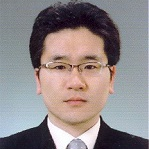Recent Advances in Flow-Induced Noise
A special issue of Applied Sciences (ISSN 2076-3417). This special issue belongs to the section "Acoustics and Vibrations".
Deadline for manuscript submissions: closed (30 September 2021) | Viewed by 30614
Special Issue Editors
Interests: aeroacoustics; noise
Special Issue Information
Dear Colleagues,
Since Lighthill (1952) defined aerodynamic noise sources mathematically, the related areas of aeroacoustic research have made remarkable progress in understanding the noise generation mechanism in applications such as jet, fan, and turbomachinery flows and in developing high-fidelity computational aeroacoustic techniques. Recent advances in the related research areas may be highlighted in terms of two points. One is the extension of the relevant physical theory from aerodynamic noise to flow-induced noise. Lighthill developed his theory for the request of reducing jet noise in the aeronautics industry in the 1950s. Although most research funding still comes from the aeronautics industry, the application areas have become broader (e.g., high-speed vehicle noise, home appliance noise, wind-turbine noise, etc.). Recently, the underwater acoustic waves radiated from ships and submarines have gained a great deal of attention due to environmental issues. The investigation into this issue inevitably requires the extension of aerodynamic noise theory to include flow noise (e.g., cavitation noise). Another reason for the increase in interest is the dramatically increased computation resources available for the numerical investigation of aerodynamic noise generation and fluid dynamics. The increasingly resolved computation results of flow-induced noise help develop our understanding of noise generation mechanisms, which enlarges our current knowledge of flow-induced noise. In this respect, this Special Issue is devoted to the application of fundamental aerodynamic noise theory and computational flow-induced noise techniques.
Prof. Dr. Cheolung Cheong
Dr. Hanshin Seol
Guest Editors
Manuscript Submission Information
Manuscripts should be submitted online at www.mdpi.com by registering and logging in to this website. Once you are registered, click here to go to the submission form. Manuscripts can be submitted until the deadline. All submissions that pass pre-check are peer-reviewed. Accepted papers will be published continuously in the journal (as soon as accepted) and will be listed together on the special issue website. Research articles, review articles as well as short communications are invited. For planned papers, a title and short abstract (about 100 words) can be sent to the Editorial Office for announcement on this website.
Submitted manuscripts should not have been published previously, nor be under consideration for publication elsewhere (except conference proceedings papers). All manuscripts are thoroughly refereed through a single-blind peer-review process. A guide for authors and other relevant information for submission of manuscripts is available on the Instructions for Authors page. Applied Sciences is an international peer-reviewed open access semimonthly journal published by MDPI.
Please visit the Instructions for Authors page before submitting a manuscript. The Article Processing Charge (APC) for publication in this open access journal is 2400 CHF (Swiss Francs). Submitted papers should be well formatted and use good English. Authors may use MDPI's English editing service prior to publication or during author revisions.
Keywords
- aeroacoustics
- flow-induced noise
- fan noise
- cavitation noise
- underwater propeller noise
- automobile wind noise
- airframe noise
Benefits of Publishing in a Special Issue
- Ease of navigation: Grouping papers by topic helps scholars navigate broad scope journals more efficiently.
- Greater discoverability: Special Issues support the reach and impact of scientific research. Articles in Special Issues are more discoverable and cited more frequently.
- Expansion of research network: Special Issues facilitate connections among authors, fostering scientific collaborations.
- External promotion: Articles in Special Issues are often promoted through the journal's social media, increasing their visibility.
- e-Book format: Special Issues with more than 10 articles can be published as dedicated e-books, ensuring wide and rapid dissemination.
Further information on MDPI's Special Issue polices can be found here.






